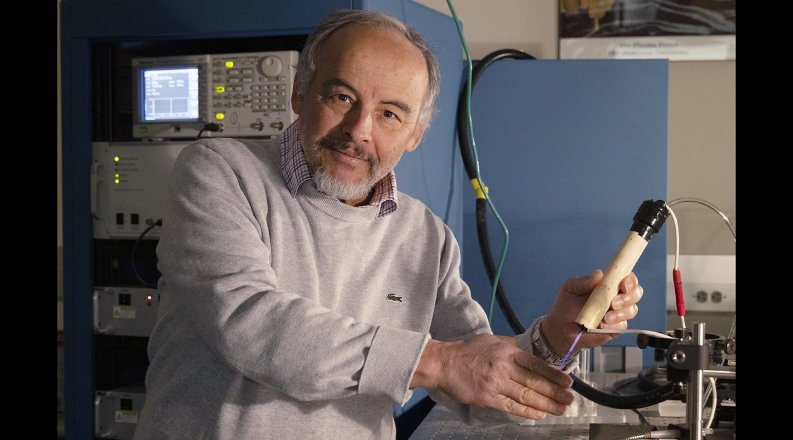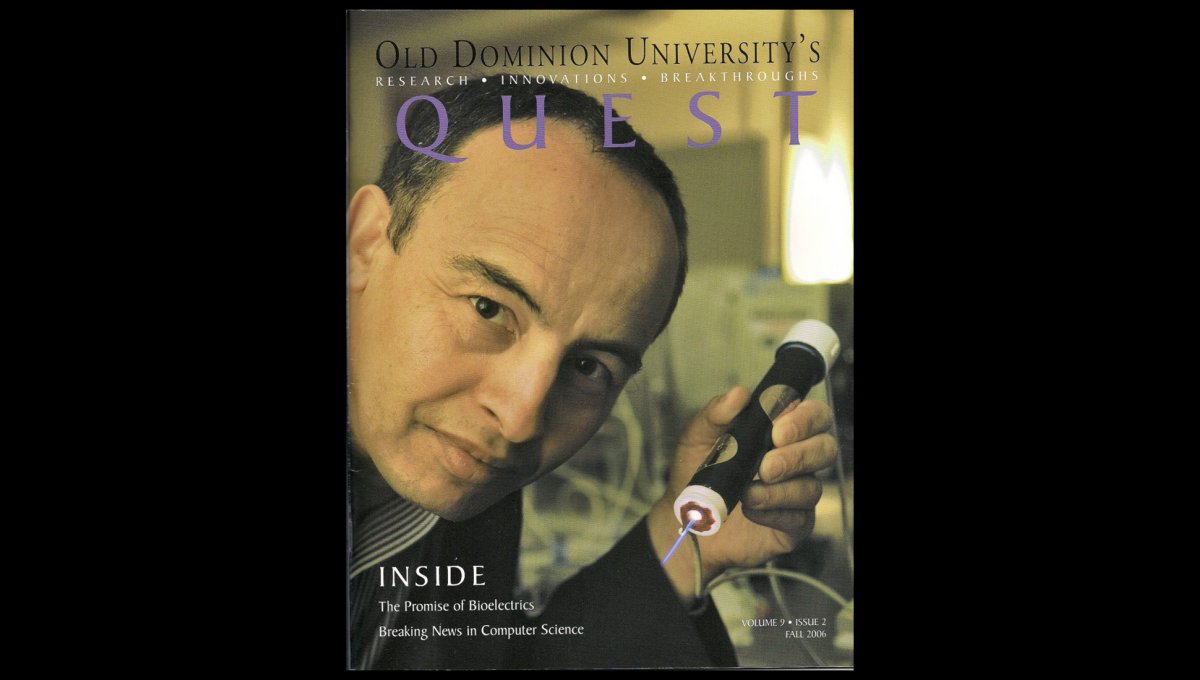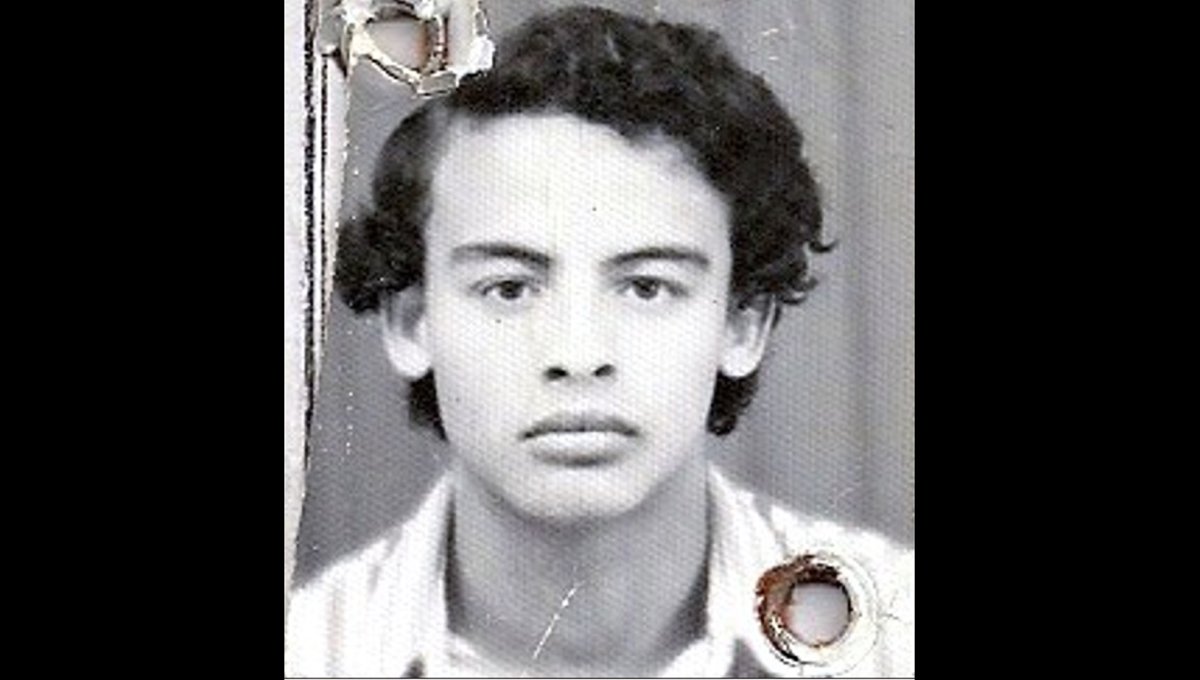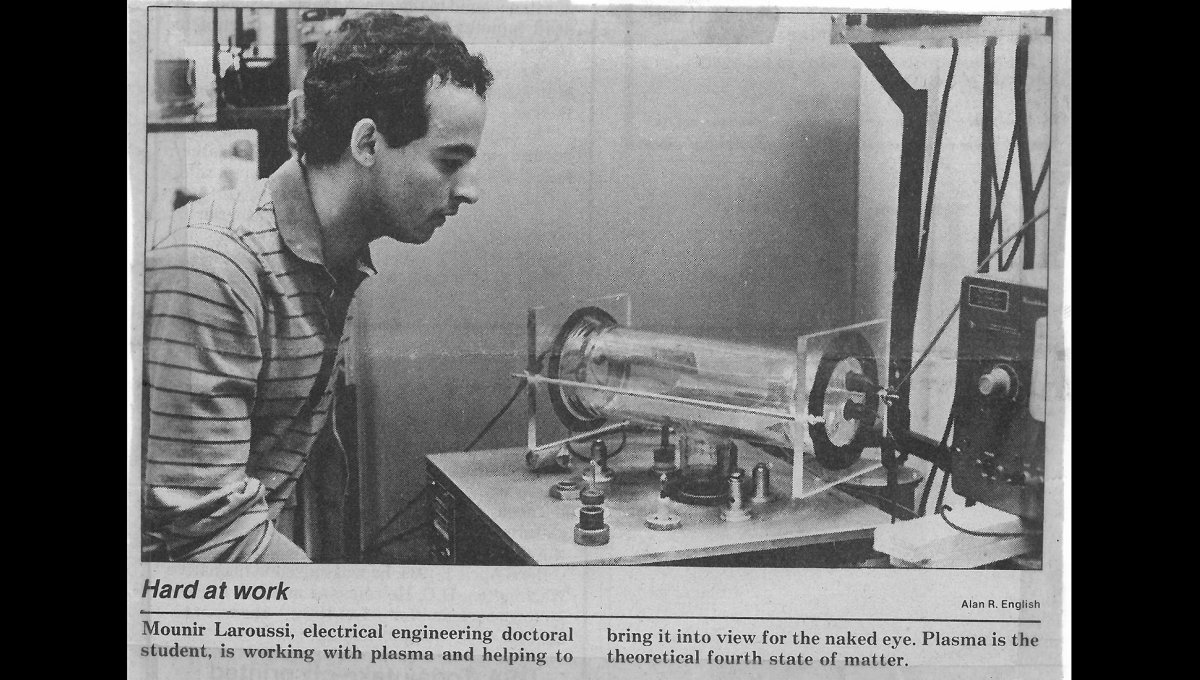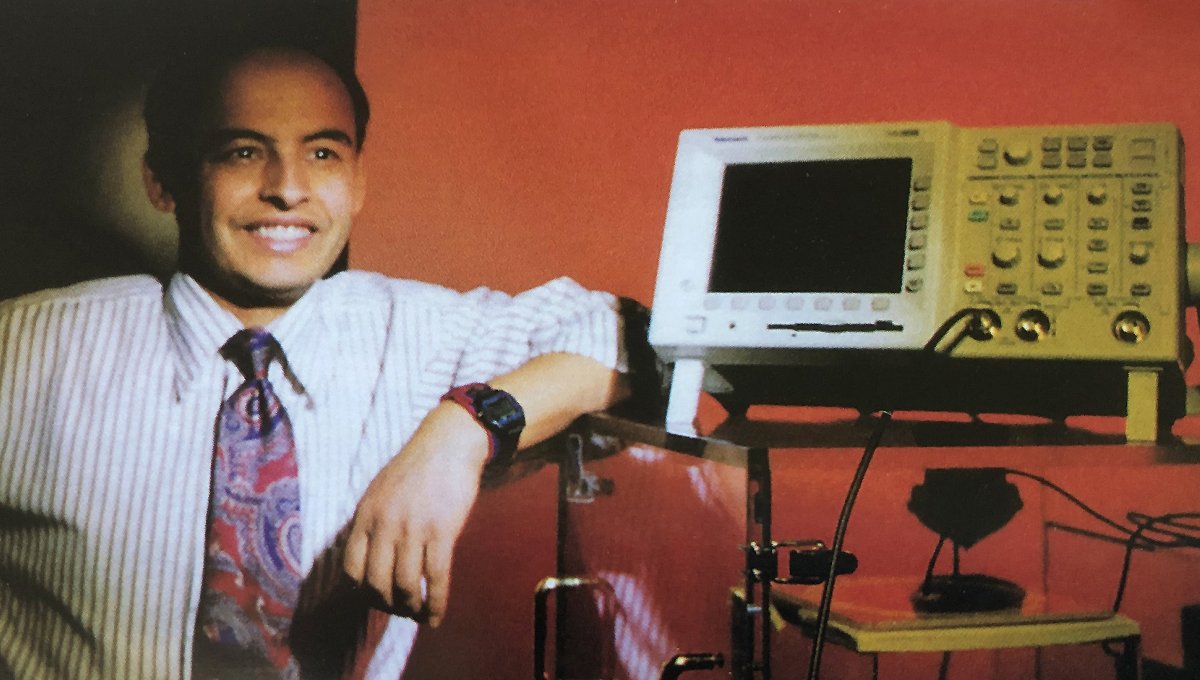Mounir Laroussi was a doctoral student at the University of Tennessee in the early 1980s when a lecture about plasma changed his career trajectory.
“It just blew my mind. It was so interesting,” Laroussi said. “I was like, ‘Wow, I think I found what I want to do.’”
That lecture, presented by Igor Alexeff, professor in the Department of Electrical Engineering, was the catalyst to Laroussi’s lifelong career focused on plasma, and in particular, its use in biomedical applications.
In May, after 26 years at ODU, he will retire from the Batten College of Engineering and Technology.
Laroussi’s academic and professional journey began over 4,500 miles away.
Laroussi grew up in Sfax, Tunisia, a historic city dating back to 849 A.D.
Carthaginian, Roman, Arabic and French colonization and its location less than 200 nautical miles from Sicily molded Tunisia into a unique blend of an Islamic and Mediterranean culture. “It was wonderful,” he said. “It was a really great place.”
Summers were spent at the beach, and playing soccer.
Laroussi also spent many hours with his father, Habib Laroussi, a theater artist, hanging out in cafes with other artists, poets, writers and painters. “My dream was to become a movie director,” he said.
His father, however, had a different suggestion.
“Listen, I know you're dreaming about show business, but let me tell you from my own experience, it's very, very hard to make it,” his father said.
“You excel in math and physics,” he said. “You may become a great scientist, you may not, but you’ll still have a job. You can work as a math teacher or as a physics teacher. Your kind of job is almost guaranteed because you'll be in education.”
Laroussi spent two years at the Ecole Nationale Superieure d’ Electronique et de Radioelectricite de Bordeaux in Bordeaux, France. It was an intensive program – similar to an American master’s degree, focused on engineering and physics.
“First students must do two years of preparatory education of intensive math and physics before applying to engineering school,” he explained.
“When we started, there were maybe 200 freshman students or so, and only about 30 of us survived,” he explained. “If you succeed, then you can apply for a selective spot in engineering.”
After graduation, he decided he wanted something beyond the average working experience. So Laroussi, who only knew a few words of English, enrolled in a six-week ESL TOEFL course hoping to apply for a doctoral program in America.
He was accepted at the University of Tennessee – Knoxville, where he studied analog electronics.
Until he came across Alexeff’s lecture on plasma.
After the lecture, Laroussi asked to work in Alexeff's plasma lab. Despite lacking funding for research assistants, Laroussi volunteered to work for free due to his interest in the subject. Eventually, Alexeff secured funding and Laroussi joined the lab.
It was there that Laroussi honed in on his life-long love study of plasma, often referred to as the fourth state of matter.
Laroussi explained that plasma makes up more than 99% of the visible universe. “All the stars and all the intergalactic matter are in a plasma state.”
“The whole universe – you can think of it as this huge ocean of plasma and all the planets are swimming in that ocean,” he added.
After earning his doctorate, Laroussi continued his research at UT for a few years before joining ODU’s newly formed Applied Research Center in Newport News, Virginia in 1998 and four years later, ODU’s Department of Electrical and Computer Engineering.
At the ARC, with funding from the Air Force Office of Scientific Research, Laroussi continued his work on using cold plasma for bio-decontamination, research he started in the mid-1990s while at the University of Tennessee.
Laroussi began to question if cold plasma could then be used in biomedical applications. The subject had never been approached. “I wanted to know what the effects of plasma would be on biological cells,” he said. “It was completely out of curiosity.”
After exposing bacterial cells to plasma, he discovered that it efficiently killed bacteria but without damaging mammalian cells.
Laroussi’s research was published in 1996 in a journal called The IEEE Transactions on Plasma Science.
“That paper is now widely considered the seed out of which the biomedical applications of cold plasma grew, and 1996 is also considered the birth year of the new field of plasma medicine,” he explained.
“I had no idea that it would open up an entirely new field,” he said. “In fact, at that time, many of my colleagues (plasma physicists) asked me what in the world I was doing using plasma for "biology" work. It took until 2003 for them to realize that this is maybe something they should get into.”
All of the research led to Laroussi’s most popular invention: the plasma pencil, a handheld device that uses cold plasma to kill bacteria safely without damaging tissue.
Laroussi faced several hurdles in the development of the device. The main challenge was how to cool plasma, an extremely hot material, to room temperature without harming human tissue.
He figured out how to keep the pencil cool by using a unique electric field, which rapidly switches on and off. This process energizes the lightweight electrons in the plasma without heating the surrounding gas.
“I worked many years until I finally got the right idea and the right approach,” he said.
For Laroussi, the device also needed to be mobile. “If you want to apply the plasma to the patient, you cannot take a patient and put them in a plasma chamber,” he explained. “I wanted something hand-held that the doctor could use to treat either a wound or lesion or in a dental application. So, it needed to be some sort of hand-held pen or pencil-like device.”
Laroussi’s plasma pencil was featured in National Geographic, the History Channel and the Smithsonian Channel. The media outlets touted the device’s potential to kill bacteria and other possible uses in dentistry and dermatology. Laroussi and the plasma pencil were also featured in “Quest,” the research magazine of ODU in 2006.
For his achievements in low-temperature plasma physics and for pioneering their biomedical applications Laroussi was awarded the 2012 Merit Award, the highest technical award given by the IEEE Nuclear and Plasma Sciences Society. He was also elevated to the rank of Fellow of the American Physical Society for his groundbreaking contributions to the physics of low-temperature plasma jets and their medical applications.
By the early 2000s, cold plasma was just starting to come into play for biomedical uses. At the 2003 International Symposium on Plasma Chemistry in Sicily, Laroussi was invited to give a talk on his research applications to nearly 2000 attendees.
In 2005, Applied Physics Letters, a peer-reviewed scientific journal published by the American Institute of Physics, featured Laroussi’s research on their cover.
He continued to teach and publish in research journals and in conference proceedings – nearly 200 articles in total. In addition, he co-authored two books, including the first book ever on the topic of plasma medicine.
In retirement, Laroussi will continue to publish professionally and to continue to work on his poetry and short stories – written primarily about his childhood in Tunisia. His wife also has a few home projects for him to work on.
Despite the success in his career, Laroussi is most proud of his family. “I think one of me and my wife's best achievements is having our kids grow up as good citizens,” he said. “And we were able to get them through college without student loans.”
Professionally, he is proud of his role in the use of cold plasma in biomedical applications. “In the last ten years, most of my efforts here at ODU have been for cancer applications,” he said.
The plasma pencil has long evolved and other scientists have designed their own – now they are called low-temperature plasma jets. Today, there are institutes and centers dedicated to cold plasma research worldwide.
“Most scientists, we're just trying to do the best science we can and to advance the scientific knowledge,” he said. “It’s more than enough if you do a good job, educate a lot of students and get them to be good scientists and publish good science that people benefit from.”
Laroussi has great hopes for the future of cold plasma. He cites contemporary uses in cancer trials, wound healing, dermatology and veterinary care. He also sees the possibility of cold plasma as adjuvant therapy, along with chemotherapy and surgery.
“Cold plasma, you can think of it as just another weapon in the armory of doctors,” he said. “There are so many therapies and so many challenges. And it's always good to have one more weapon that the doctor can use to help.”
Dr. Laroussi would like to acknowledge a few individuals who made great contributions to his life and academic career. First, his parents (Habib and Manana Laroussi) and wife (Nicole Mache Laroussi) who supported him unconditionally. Second, his mentors. These are Prof. Igor Alexeff (University of Tennessee, Knoxville) who got him into plasma physics and guided him early on; Dr. Robert J. Barker (AFOSR) who believed in his ideas and funded much of his work; and Dr. Ulrich Kogelschatz (ABB, Switzerland) a prominent plasma scientist who inspired and encouraged him. Finally, he would like to thank all his students and collaborators who played crucial roles in his research and greatly contributed to its success.



